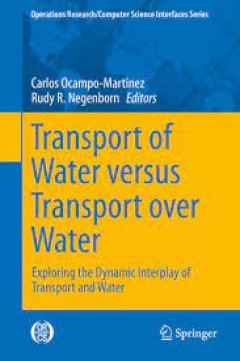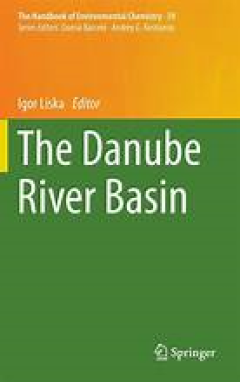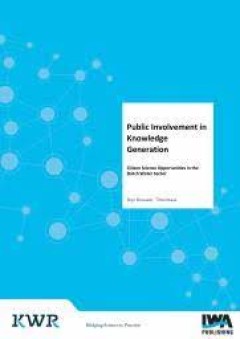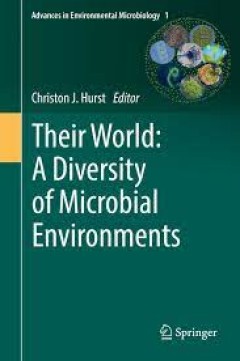Filter by

Transport of Water versus Transport over Water Exploring the Dynamic Interpl…
This book aims at stimulating discussion between researchers working on state of the art approaches for operational control and design of transport of water on the one hand and researchers working on state of the art approaches for transport over water on the other hand. The main contribution of the book as a whole is to present novel perspectives ultimately leading to the management of an envi…
- Edition
- -
- ISBN/ISSN
- 978-3-319-16133-4
- Collation
- -
- Series Title
- -
- Call Number
- -

The Fukushima Daiichi Nuclear Accident
The Magnitude 9 Great East Japan Earthquake on March 11, 2011, followed by a massive tsunami struck TEPCO’s Fukushima Daiichi Nuclear Power Station and triggered an unprecedented core melt/severe accident in Units 1 – 3. The radioactivity release led to the evacuation of local residents, many of whom still have not been able to return to their homes. As a group of nuclear experts, the A…
- Edition
- 1
- ISBN/ISSN
- 978-4-431-55160-7
- Collation
- XII, 560, 31 b/w illustrations, 55 illustrations in colour
- Series Title
- -
- Call Number
- -

The Danube River Basin
This volume offers a comprehensive review of the chemical, biological and hydromorphological quality of the Danube. The first part examines the chemical pollution of surface waters, focusing on organic compounds (with special emphasis given to EU WFD priority substances and Danube River Basin specific pollutants), heavy metals and nutrients. Attention is also given to pollution of groundwater a…
- Edition
- -
- ISBN/ISSN
- 978-3-662-47739-7
- Collation
- XV, 523, 60 b/w illustrations, 125 illustrations in colour
- Series Title
- The Handbook of Environmental Chemistry
- Call Number
- -

The Coral Reef Era: From Discovery to Decline
On 4 June 1629, the Batavia, pride of the Dutch East India Company Fleet, was wrecked on her maiden voyage in a seemingly empty expanse of the Indian Ocean. The question “how did this happen?” led to 300 years of investigation by those curious to solve the enigma: what are corals and how are coral reefs formed?. Relying heavily on primary source material Part 1 traces the sequential evol…
- Edition
- 1
- ISBN/ISSN
- 978-3-319-07479-5
- Collation
- XV, 195, 35 b/w illustrations
- Series Title
- Humanity and the Sea
- Call Number
- -

Border Flows : A Century of the Canadian-American Water Relationship
Declining access to fresh water is one of the twenty-first century’s most pressing environmental and human rights challenges, yet the struggle for water is not a new cause. The 8,800-kilometer border dividing Canada and the United States contains more than 20 percent of the world’s total freshwater resources, and Border Flows traces the century-long effort by Canada and the United States to…
- Edition
- -
- ISBN/ISSN
- 9781552388969
- Collation
- -
- Series Title
- -
- Call Number
- 550 HEA b

Governing Water in India Inequality, Reform, and the State
Intensifying droughts and competing pressures on water resources foreground water scarcity as an urgent concern of the global climate change crisis. In India, individual, industrial, and agricultural water demands exacerbate inequities of access and expose the failures of state governance to regulate use. State policies and institutions influenced by global models of reform produce and magnify …
- Edition
- -
- ISBN/ISSN
- 9780295750446
- Collation
- -
- Series Title
- -
- Call Number
- -

Public Involvement in Knowledge Generation Citizen Science Opportunities in …
Public Involvement in Knowledge Generation is an Open Access co-publication with KWR.
- Edition
- -
- ISBN/ISSN
- 9781789060492
- Collation
- -
- Series Title
- -
- Call Number
- -

Basic Numerical Methods in Meteorology and Oceanography
The purpose of this book is to provide an introduction to numerical modelling of the ocean and the atmosphere. It originates from courses given at Stockholm University and is intended to serve as a textbook for students in meteorology and oceanography with a background in mathematics and physics. Focus is on numerical schemes for the most commonly used equations in oceanography and meteorology …
- Edition
- -
- ISBN/ISSN
- 9789176351727
- Collation
- -
- Series Title
- -
- Call Number
- -

Toxic Pollutants in China Study of Water Quality Criteria
The book presents some of the findings of research into China’s water quality criteria for toxic pollutants, including heavy metals, PAHs and emerging pollutant. Water quality criteria (WQC) are the scientific basis for establishing water quality standards (WQSs). For a long time, the study of WQC in China has been neglected, so that almost all of China’s WQSs were developed based on foreig…
- Edition
- -
- ISBN/ISSN
- 978-94-017-9795-5
- Collation
- -
- Series Title
- -
- Call Number
- -

Their World: A Diversity of Microbial Environments
This volume summarizes recent advances in environmental microbiology by providing fascinating insights into the diversity of microbial life that exists on our planet. The first two chapters present theoretical perspectives that help to consolidate our understanding of evolution as an adaptive process by which the niche and habitat of each species develop in a manner that interconnects individua…
- Edition
- -
- ISBN/ISSN
- 978-3-319-28071-4
- Collation
- -
- Series Title
- -
- Call Number
- -
 Computer Science, Information & General Works
Computer Science, Information & General Works  Philosophy & Psychology
Philosophy & Psychology  Religion
Religion  Social Sciences
Social Sciences  Language
Language  Pure Science
Pure Science  Applied Sciences
Applied Sciences  Art & Recreation
Art & Recreation  Literature
Literature  History & Geography
History & Geography